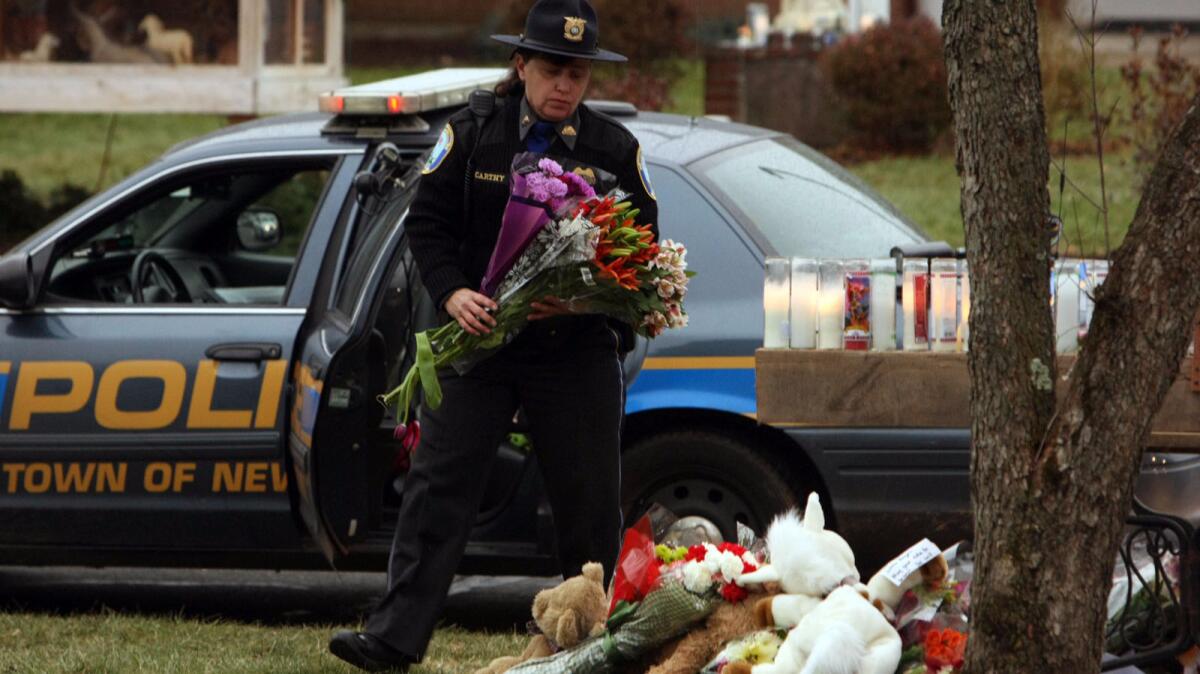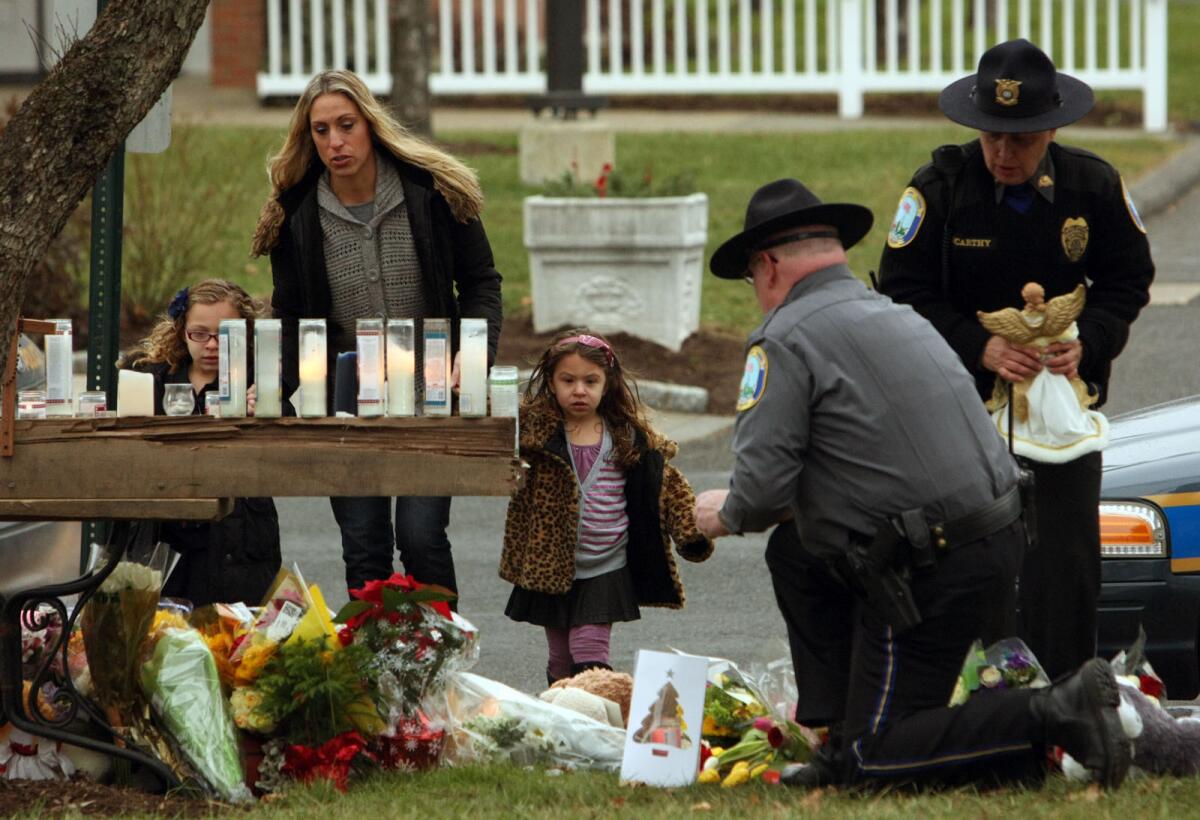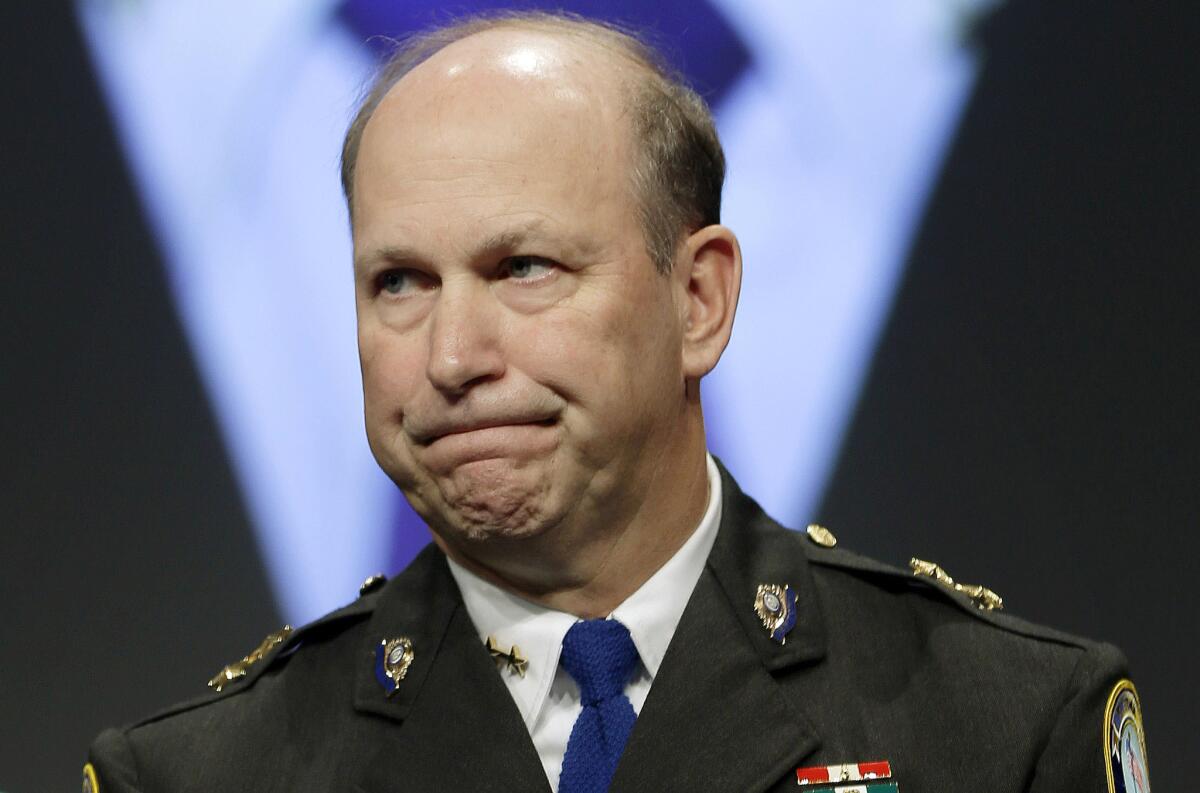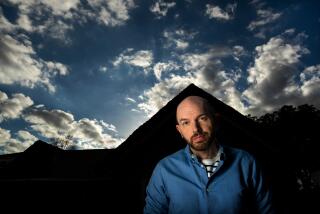How a cop and his wife found peace after the Sandy Hook massacre

The title pretty much captures the challenge: “Preparing for the Unimaginable.”
It’s the name of a new handbook crafted to help police departments prepare for, and recover from, what the National Alliance on Mental Illness calls “mass casualty events.”
In this era of mass shootings, the guide offers sobering recommendations on how to safeguard the mental health of police officers and others who must rush to scenes of carnage. The table of contents includes headings such as “Tips for helping officers to heal” and “Assign a mental health incident commander.”
The guide, released in late May, also contains intimate, first-person accounts of law enforcement officers who describe how they and colleagues struggled to overcome traumatic events. They recount nightmares, cold sweats, feelings of helplessness.
“One night, it hit me: This job is not for me,” wrote Sgt. Mark DiBona, a deputy sheriff in central Florida.
DiBona, who had already been feeling stressed at work, one night tried to resuscitate a baby who wasn’t breathing. The boy died, and DiBona was overwhelmed by guilt, convinced he could have done more to save the child.
After the funeral, he couldn’t shake the memory of the little body in his arms and relived other awful images from his career — bloody crashes, victims of sexual abuse, friends who died in the line of duty.
“I’m falling really fast,” he wrote of that troubling time. “I tried to fight the thoughts, but I felt like I was drowning. I attempted suicide twice that night.”

The National Alliance on Mental Illness developed the guide at the request of the U.S. Department of Justice and Michael Kehoe, then chief of police in Newtown, Conn., site of the Sandy Hook Elementary School massacre.
Along with the letters by law enforcement personnel is an extraordinary account by Kehoe’s wife, Lori Kehoe. Unflinching and at times painful to read, the letter recounts how she and her husband weathered the tragedy that claimed the lives of 20 first-graders and six adults, and how the couple finally began to heal.
Here are excerpts from her letter:
On the first day of the shooting, Dec. 14, 2012:
“I did not expect Mike to come home that night. After all, they had cots at the police department; they had uniforms and showers. When he did arrive home at midnight, he talked and talked until he passed out in the middle of a sentence. At 6:00 a.m., he was out the door.
“I offered to answer phones or e-mail. His answer was, ‘No, I got it covered.’ I offered to make him breakfast, and the answer — which became a common phrase in our home — was, ‘No, I got it covered.’
“It was rare that he needed me for anything. This became the schedule: 6:00 a.m. to midnight.”
On fears for the officers:
“Each night it was necessary for Mike to decompress, and I saw it as my job to be available and to listen and do whatever he needed. He would continue to literally fall asleep talking. When Mike started yelling in his sleep, I could tell he was reliving the incident. This schedule lasted for about four months, and it became extremely isolating.
“Mike does not get upset. He is always cool, calm, and collected. He doesn’t bounce off the walls. A few weeks after the shooting, he came home and was pacing and absolutely agitated beyond agitated. He was concerned about his officers committing suicide.
“He expressed his concerns, and we came up with options for him to execute the next day. I was always the sounding board, bringing whatever common sense I could muster to the table.”
On not knowing where to turn for help:
“Those were the days when I would wonder, whom do you call for answers? After all, isn’t there always someone to call for help in life? When you got a flat tire, you call your dad. If your cake won’t rise, you call your mom.
“I realized there is no one to call when 20 children get blown away in your town. You’re watching your partner struggle with all these questions and no answers.”

On her husband’s changing behavior:
“He was suddenly in control of everything. All of a sudden, he was telling me what to do and when. It was bizarre from a man who never gave orders at home. Then I realized he needed to be in control, to maintain order. He was spending his days making rapid-fire decisions continuously for weeks on end.
“Finally in August (nine months after the shooting), Mike came home and said, ‘I got to something on my desk today that was on my desk before Dec. 14.’ I thought to myself, ‘It’s August, and the trauma is finally over.’”
On how the shooting affected her:
“A year after the shooting, I was mentally and emotionally not functioning, almost to the point of not getting out of bed. And even though I’m a nurse, I didn’t know about trauma — I didn’t know what trauma could do to a person or that there was such a thing as PTSD by association.
“I was so angry. I was mad at everyone and everything. I was depressed beyond belief, alone, and isolated.”
Lori Kehoe eventually received treatment at a trauma center in California and wrote about the experience:
“They taught me that the trauma actually changes your brain — you can see it on an MRI. In addition to five full days of intervention and counseling, they did a physical treatment on me called eye movement desensitization and reprocessing (EMDR). It’s designed to reduce the emotion that goes with the thoughts about the traumatic experience. It was extremely effective.
“The treatment was necessary, and it changed my life. I absolutely came back a new woman, and I got better and better after treatment. Today, we’re good.”
ALSO
Swedish grad students who pinned down Stanford sex offender speak out
Debtors prison a thing of the past? Some places in America still lock up the poor
LAPD officers get a crash course in all things Korean
More to Read
Sign up for Essential California
The most important California stories and recommendations in your inbox every morning.
You may occasionally receive promotional content from the Los Angeles Times.










